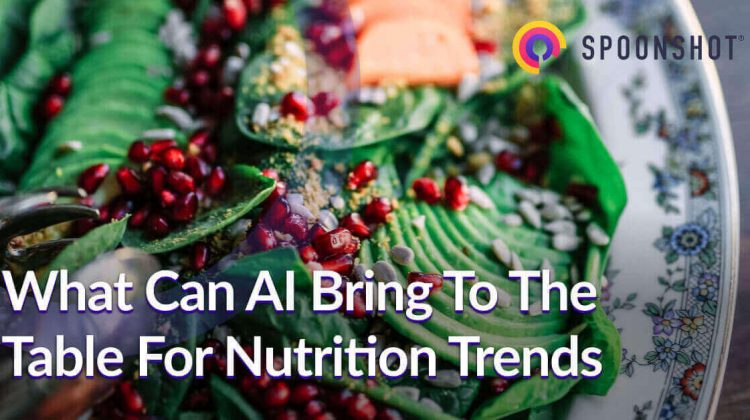
2020 has been tumultuous, to say the least. It has changed how people approach food, health, and nutrition. Food consumed every day is the basis of immunity and good health. A prominent health food trend for 2021 is the increase in awareness of nutrition.
Nutrition trends today target personalized healthcare. Leveraging AI simplifies this across the board ranging from research to maintaining health and treatment options. Health food trends in 2021 place a premium on the consumption of healthy food in optimal portions.
An important application is leveraging AI in pattern recognition to identify patients at risk of certain diseases and evaluating their health through the prisms of lifestyle, environment, genes, and other factors.
Staying healthy in 2021 starts by putting people in control of their own health. AI enables healthcare professionals better understand evolving needs and behavior patterns of the people they care for. This leads to excellent feedback and assistance for staying healthy.
Table of contents
4 Ways to Become Healthy with AI food trends
AI has grown increasingly integral to the fabric of our collective everyday lives. Data analytics in the food and beverage [F&B] industry marks the beginning.
Predicting consumer preferences
F&B data analytics enables a nuanced perception of consumer preference. Data analysis removes personal bias in decision-making through real-time data and aids in developing newer products and flavor combinations based on consumer needs.
Spoonshot uses AI and food science to recognize emerging food trends, ingredient pairing etc. Further, data analytics identify the consumer needs that led to their growth and predict their future trajectory.
Other companies uses ML and predictive algorithms to model consumer flavor preferences. Data analytics provides the base for simulating model consumer flavor preferences and predicting the response to new tastes.
Developing new flavors
Flavor creation, a combination of the optimal ingredients and their precise ratio to meet objectives, is time-consuming and labor-intensive. It might involve creation within the same flavour family such as the type of tomato for a pasta sauce or the best combination of herbs to create vegan condiments.
Minute changes in ingredient ratios can have enormous consequences on flavor. AI enables rapid innovation allowing the company to maintain relevance. Additionally, this opens the possibilities for the development of novel and potent flavor combinations to meet changing dietary preferences and nutrition requirements.
McCormick & Company in collaboration with IBM Research has designed an AI system, “ONE”, to create new flavor experiences. ONE was launched with a set of one-dish recipe mix flavors developed to deliver big-on flavor capable of working around a variety of proteins and vegetables.
Data analytics from the F&B industry allow flavors to be understood comprehensively. This drives new flavor combinations using hundreds of millions of data points available across dietary preference and flavor favorites.
Also Read: Top 10 Applications of AI in Food Service Industry
Tackling lifestyle diseases
The connection between dietary habits and chronic illness can no longer be denied. While eating healthy is one part of the solution, consumers at larger are not aware of the characteristics, constraints, and ingredients in their food.
Governments are taking a significant interest in this as well. For instance, Swiss national nutrition data (menuCH), Swiss demographic data, and health data were compiled to create a comprehensive repository. The resulting database is used to identify dietary patterns that cause chronic lifestyle diseases.
Data analytics in the F&B industry helps tackle this by analyzing data points across various metrics that contribute to certain diseases and thereby understand the optimal diet and treatment options.
The usage of smart wearables have grown tremendously over the last few years. Medical devices and consumer wearables are now used extensively to monitor overall health, nutrition, and fitness. This permits holistic healthcare intervention in treating diseases ranging from cancer to obesity and diabetes at earlier stages.
Customizing diet plans
There is no one-size-fits-all diet. They need to be designed based on individual requirements and lifestyles. Data analytics in the F&B industry goes a long way in understanding dietary changes required to control various diseases and maintain good health.
Scientists at Rensselaer Polytechnic Institute and IBM Research have collaborated to create FoodReQ. This regulates food choices and devises customized nutritious recipes. The algorithm considers personal preferences, allergies, and other factors to guide healthy eating.
Bringing AI and data analytics into personalized diet planning increases the probability that users will meet their original weight loss goal. Data analytics estimates a 72% probability that users will actually lose the expected weight. The central factors that the prediction includes are properties of weight loss meals, users’ social demographic data, and desired weight loss.
AI and data analytics when deployed together help in gaining actionable insights based on several hundred million data points. These can be used to improve flavor and nutrition in recipe development. This is the base for creating personalized food tailored for better flavor and nutrition.
Want to read less and learn more? Download our free infographic below




Leave a Reply